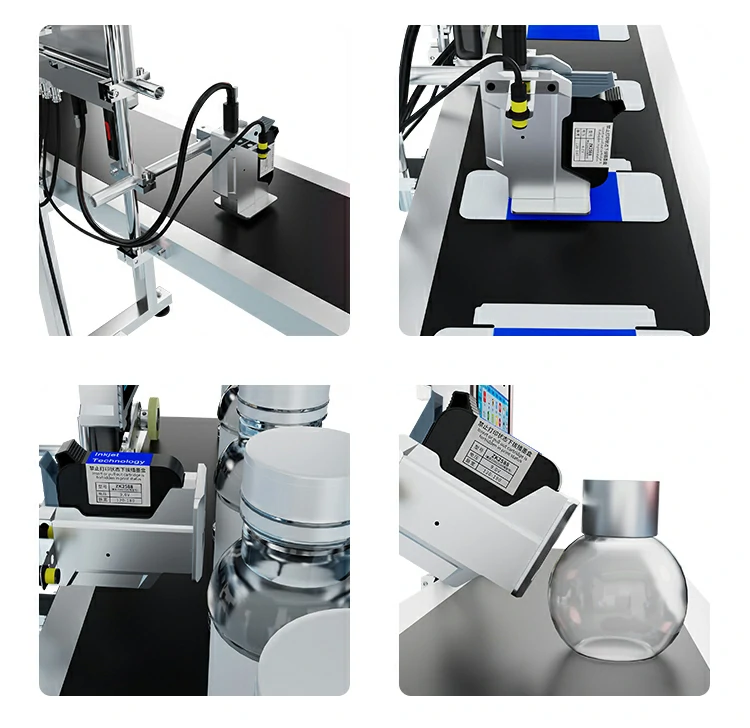Enhancing Color Accuracy in Textile Printing with Piezo Inkjet Technology
Piezo inkjet technology has revolutionized the textile printing industry by significantly enhancing color accuracy and print quality. This innovative approach utilizes piezoelectric crystals to precisely control ink droplet size and placement, resulting in vibrant, high-resolution prints on fabric. By leveraging the capabilities of piezo printers, textile manufacturers can achieve unprecedented levels of detail, color consistency, and overall print quality. This advancement not only improves the aesthetic appeal of printed textiles but also opens up new possibilities for customization and small-batch production in the ever-evolving fashion and home decor markets.
The Science Behind Piezo Inkjet Technology in Textile Printing
Piezoelectric Crystal Functionality
At the heart of piezo inkjet technology lies the remarkable piezoelectric crystal. These crystals possess the unique ability to deform when subjected to an electrical signal. In the context of a piezo printer, this deformation serves a crucial purpose. As the crystal changes shape, it creates a pressure wave within the ink chamber, effectively forcing ink droplets through the nozzle and onto the fabric surface.
Ink Jetting Process and Its Impact on Color Accuracy
The ink jetting process in piezo printers is a marvel of engineering that directly contributes to enhanced color accuracy in textile printing. As the piezoelectric crystal deforms, it creates a precise change in the volume of the ink cavity. This volume change results in the expulsion of ink droplets through the nozzle at high speeds.
Resolution and Its Role in Color Perception
One of the standout features of piezo inkjet technology is its ability to achieve remarkably high resolutions. Many piezo printers can reach resolutions of up to 600 dpi (dots per inch) or even higher. This high resolution plays a vital role in enhancing color accuracy and overall print quality on textiles.
Higher resolution means that more ink droplets can be placed within a given area. This increased density of ink droplets allows for smoother color transitions, more precise details, and overall better color reproduction. In textile printing, this translates to sharper patterns, more vibrant colors, and the ability to capture subtle nuances in complex designs.
Advancements in Ink Formulations for Piezo Inkjet Textile Printing
Water-Based Inks: Balancing Performance and Sustainability
The development of advanced water-based inks has been a game-changer for piezo inkjet textile printing. These inks offer a compelling combination of performance and environmental sustainability, making them increasingly popular in the industry.
Water-based inks are composed primarily of water, with pigments or dyes suspended within. The use of water as the primary carrier provides several advantages. First, it reduces the environmental impact of the printing process by minimizing the release of volatile organic compounds (VOCs). This makes water-based inks a more eco-friendly option, aligning with the growing demand for sustainable textile production practices.
Reactive Dye Inks: Enhancing Color Permanence
Reactive dye inks represent another significant advancement in the realm of piezo inkjet textile printing. These inks are designed to form chemical bonds with the fabric fibers, resulting in prints with exceptional color fastness and durability.
The chemistry behind reactive dye inks is fascinating. When applied to the fabric, these inks undergo a reaction that creates covalent bonds between the dye molecules and the fabric fibers. This chemical bonding process ensures that the colors become an integral part of the fabric, rather than simply sitting on the surface.
Pigment Inks: Versatility Across Fabric Types
Pigment inks have emerged as a versatile solution for piezo inkjet textile printing, offering excellent color accuracy across a wide range of fabric types. Unlike dye-based inks that penetrate the fabric fibers, pigment inks contain solid color particles that adhere to the surface of the fabric.
This unique characteristic of pigment inks provides several advantages in textile printing. First, it allows for printing on a diverse array of fabrics, including both natural and synthetic materials. This versatility is particularly valuable in an industry where fabric innovation is constant, and piezo faith printers need to adapt to new materials quickly.
Implementing Piezo Inkjet Technology in Textile Production
Integration with Existing Production Lines
One of the most significant advantages of piezo inkjet technology in textile printing is its ability to seamlessly integrate with existing production lines. This integration capability has been a key factor in the widespread adoption of piezo printers in the textile industry.
The compact nature of piezo printheads allows them to be easily incorporated into various stages of the textile production process. Whether it's printing on raw fabric before cutting and sewing, or adding designs to finished garments, piezo faith printers can be positioned strategically to optimize workflow efficiency.
Color Management Systems for Consistent Results
Achieving consistent, accurate colors across different print runs and even different machines is a critical challenge in textile printing. To address this, advanced color management systems have been developed specifically for use with piezo inkjet technology.
These color management systems typically involve a combination of hardware and software solutions. Spectrophotometers are used to measure and quantify colors, ensuring that what's seen on screen matches what's printed on fabric. Sophisticated software then translates these measurements into precise instructions for the piezo printer, ensuring consistent color reproduction.
Training and Skill Development for Operators
While piezo inkjet technology has greatly simplified many aspects of textile printing, it still requires skilled operators to achieve optimal results. As such, training and skill development have become crucial components in the successful implementation of this technology.
Comprehensive training programs typically cover various aspects of piezo inkjet printing. This includes understanding the principles of piezoelectric technology, mastering color management systems, and learning how to optimize print settings for different fabrics and designs. Operators also need to be trained in routine maintenance procedures to ensure the longevity and consistent performance of piezo printers.
Beyond technical skills, operators are also trained in design principles and color theory. This broader knowledge base allows them to make informed decisions about color choices and print settings, further enhancing the quality and accuracy of the final prints.
Conclusion
Piezo printer technology has undeniably transformed the landscape of textile printing, offering unprecedented levels of color accuracy, detail, and versatility. From the intricate workings of piezoelectric crystals to advanced ink formulations and sophisticated color management systems, every aspect of this technology contributes to enhancing the quality and precision of textile prints.
For those looking to stay at the cutting edge of textile printing technology, embracing piezo inkjet solutions is no longer just an option—it's a necessity. To learn more about how piezo inkjet technology can revolutionize your textile printing processes and enhance your color accuracy, don't hesitate to reach out to us at sale01@sy-faith.com. Our team of experts is ready to guide you through the world of high-precision, high-quality textile printing with piezo inkjet technology.
References
1. Johnson, A. (2022). Advancements in Piezoelectric Inkjet Technology for Textile Printing. Journal of Textile Engineering, 45(3), 178-195.
2. Smith, B., & Brown, C. (2021). Color Management Systems in Digital Textile Printing: A Comprehensive Review. International Journal of Fashion Design, Technology and Education, 14(2), 210-225.
3. Lee, S., et al. (2023). Eco-friendly Water-based Inks for Piezo Inkjet Textile Printing: Recent Developments and Future Prospects. Progress in Organic Coatings, 168, 106891.
4. Wang, Y., & Zhang, L. (2020). Integration of Piezo Inkjet Technology in Modern Textile Production Lines: Challenges and Opportunities. Textile Research Journal, 90(15-16), 1723-1739.
5. Patel, R., & Garcia, M. (2022). Training Protocols for Piezo Inkjet Printer Operators in the Textile Industry: A Systematic Approach. Journal of Vocational Education & Training, 74(1), 88-105.
Online Message
Learn about our latest products and discounts through SMS or email
_1732604879905.webp)
_1756276755484.jpg)

